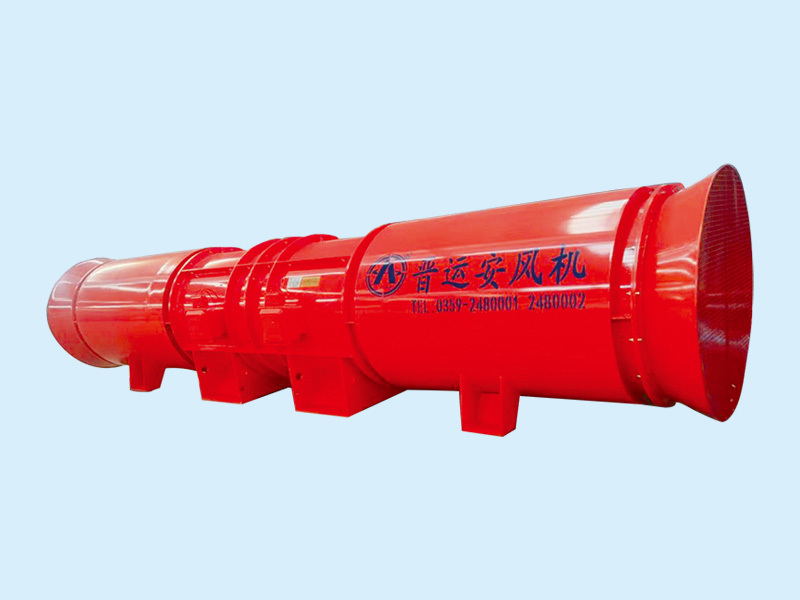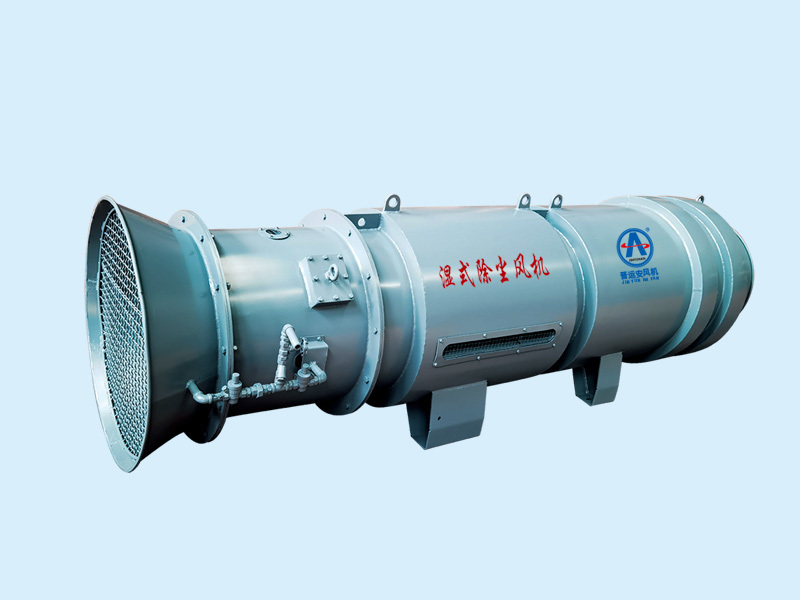28# Explosion-proof Counter-rotating Axial Main Ventilator for Coal Mine Ground Use Shipped to Guizhou
2025-10-13
The main and auxiliary components of the main ventilation fan
1) The complete components of the fan unit include tunnel joints, inlet collectors, primary fans, secondary fans, diffusers, round-to-square adapters, silencers, and diffusion towers, among others. Inside the fan, the airflow passages are uniformly smooth. The inlet collector, rectifier, and fishbone-shaped heat exchangers are all manufactured using cold-roll forming with precision molds. Meanwhile, the fishbone-shaped heat dissipation tubes and motor base support plates not only meet stringent mechanical requirements such as adequate strength and rigidity but also incorporate features like rounded transitions to minimize drag. These design elements ensure that the fan’s airflow paths remain uniform and smooth, reducing flow resistance and enhancing overall fan performance. All types of supports are designed with symmetrical structures, further optimizing the internal flow channel layout. The installation configuration features two fans arranged side by side in a horizontal arrangement. Each fan is equipped with standard performance test interfaces, including pressure-measuring rings, enabling accurate measurement of parameters such as negative pressure and airflow. These interfaces can be connected to pressure sensors for real-time monitoring of both dynamic and static pressures, as well as airflow rates. Additionally, vibration measurement mounts are installed on the outer wall of the ductwork, with预留接口 for future vibration sensor installation. The design and manufacturing of every component must guarantee robustness under various operating conditions. Specifically, the hub material must be no lower than Q345, and its outer surface adopts a spherical structure. Moreover, the hub web thickness should be at least 35 mm. The fan casing is made from Q235 steel, with the main housing shell featuring steel plates no thinner than 8 mm. The motor base plate must be at least 25 mm thick, while the inner protective cylinder undergoes precision machining to ensure a minimum wall thickness of 15 mm after processing. Finally, all components must be rigorously designed and fabricated to withstand the demands of diverse operational scenarios. After welding, the entire hub undergoes comprehensive annealing treatment. Key parts such as the hub and blades are subjected to non-destructive testing, accompanied by detailed inspection reports to ensure superior quality and reliability. Additionally, all weld seams are meticulously executed, presenting a neat and aesthetically pleasing appearance without any visible defects. Critical welded joints also receive specialized heat treatment to eliminate residual stresses, further enhancing the structural integrity and longevity of the fan assembly.
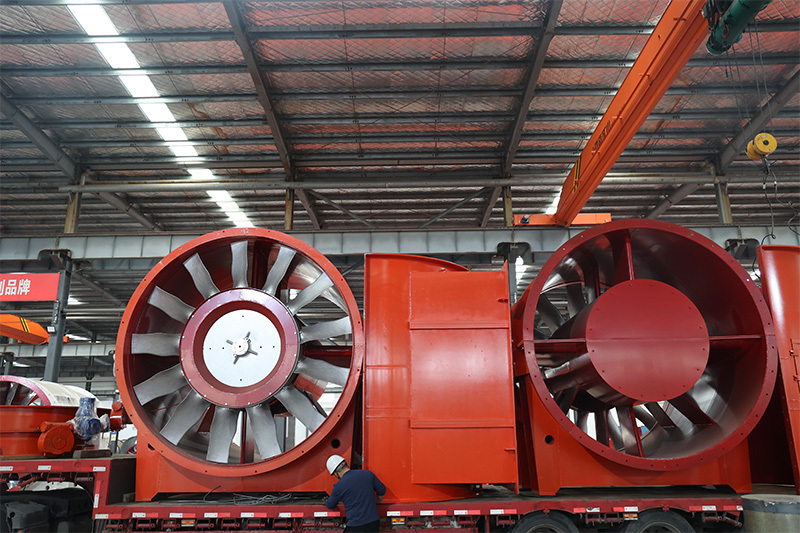
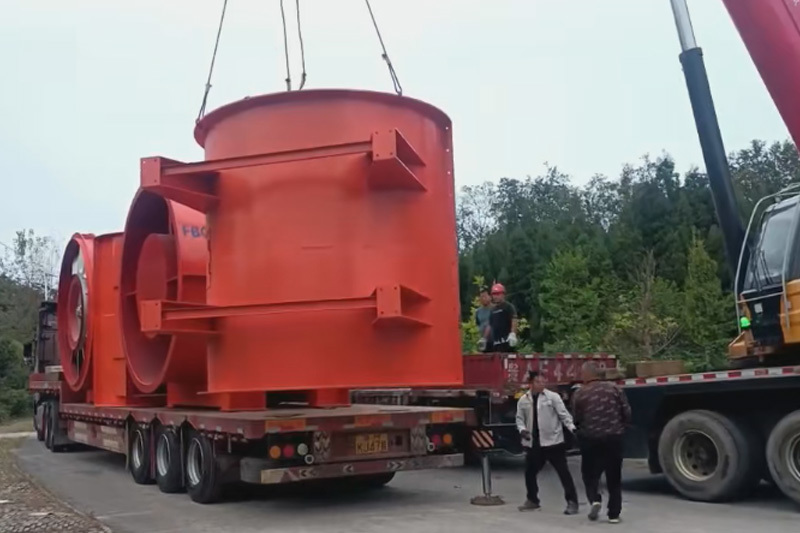
2) Fan casing fabrication and anti-corrosion/rust removal: High-quality Q235 steel is selected as the raw material, and a material certification report will be provided. The casings are entirely cut using laser cutting machines, ensuring high dimensional accuracy and efficiency—key factors that further enhance product quality. All welding operations utilize advanced carbon dioxide shielding technology, minimizing deformation of the fan casings and guaranteeing that each component meets the design specifications. After welding, the casings undergo sandblasting treatment to remove any residual oils, dirt, oxide scale, rust, or paint coatings from the steel surface, thereby improving the adhesion of both primer and topcoat. A double coat of primer is applied, followed by a final application of anti-corrosion polyurethane topcoat before the fan leaves the factory. Each primer layer achieves a film thickness of 30–40 μm, while the total topcoat thickness upon completion reaches 100–140 μm. The fan’s exterior color can be customized according to the customer’s specific requirements.
3) Noise reduction measures for the fan: The primary noise sources of the fan include motor operation noise, noise generated by airflow, and other mechanical noises. To address these noise sources, the fan’s flow separation chamber, diffuser, dedicated silencers, and diffusion tower are designed not only to optimize fan performance but also to incorporate low-noise features. Specifically, the fan is equipped with noise-reducing components such as a two-stage silencer diffuser, row-type silencers, and built-in silencing panels within the diffusion tower. As a result, the fan’s noise level complies with the requirements outlined in JB/T 8690 "Noise Limits for Fans," ensuring it meets the standards set forth in the Environmental Impact Assessment. All silencer diffusers are fitted with sound-absorbing layers, each at least 50 mm thick, while the perforated plates used have a thickness of no less than 3 mm to maintain structural integrity. Additionally, corrosion-resistant treatments are applied, and the sound-absorbing cotton filler has a bulk density of at least 35 kg/m³. The row-type silencer features a square design with an axial length of 2 meters. Its inner shell and built-in silencing panels are constructed using perforated sound-absorbing plates, filled with sound-absorbing cotton that meets the same density requirement of at least 35 kg/m³. The silencer shell itself is made of 6-mm-thick steel plates, with an internal sound-absorbing layer measuring 80 mm in thickness. Inside the row-type silencer, there are nine silencing panels, each 150 mm thick and measuring 1.8 m × 4 m in size. Meanwhile, the diffusion tower incorporates seven built-in silencing panels, each matching the internal width of the tower (1 meter) and measuring 100 mm in thickness. The sound-absorbing cotton filling within each panel also adheres to the minimum density requirement of 35 kg/m³.
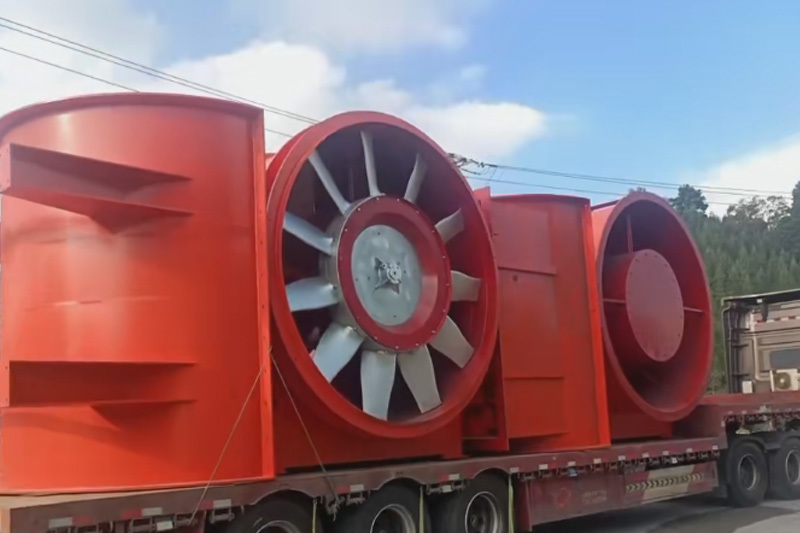
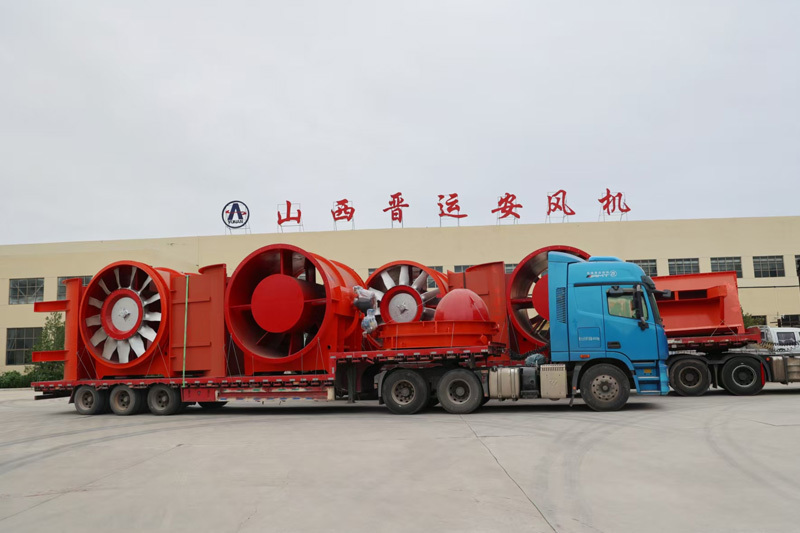
The sound-absorbing cotton is made from non-combustible or flame-retardant materials. Measures taken from three aspects— aerodynamic noise, motor noise, and mechanical noise—effectively reduce the operating noise of the fan. The noise levels comply with the requirements of B/T 8690-2014, "Industrial Ventilation Fans — Noise Limits."
4) Drainage of the fan: A water drainage slope is installed at the bottom of the fan housing, and drain holes equipped with drain valves are provided at the lowest points of each component. Additionally, heating cables are evenly wrapped around the drainage pipeline to ensure that the pipes remain ice-free even during the coldest winter temperatures in this region. The electric heating and insulation systems are designed as explosion-proof devices.
5) Impeller Casing Protection Ring: A copper ring is installed between the blades and the casing to prevent metal-to-metal contact and potential spark generation. The protection ring is securely fixed to the casing using a "dovetail groove" design, ensuring the copper ring remains permanently in place without ever loosening. Additionally, the copper ring material undergoes a special treatment process, and it is fastened with bolts to eliminate safety risks caused by riveting stresses. This solution effectively addresses the issue of copper band protection rings coming loose, completely eliminating any associated hazards. Furthermore, the friction spark safety performance between the blade material and the protection ring must comply with the requirements specified in GB/T 13813, and we have successfully obtained the corresponding certification for the metal material's friction spark performance.
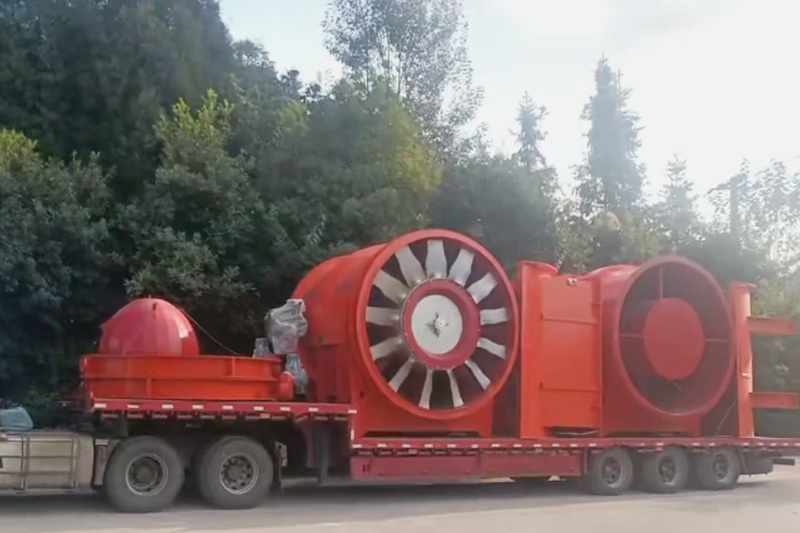
6) Wind Turbine Braking System: Both the primary and secondary main units of the fan are equipped with reliable braking devices. The braking system utilizes manual radial braking, ensuring no axial force is applied to the motor shaft during braking, thereby improving the load distribution on the motor bearings. After shutdown, the system can quickly initiate reverse airflow, with the reverse airflow duration meeting the requirement specified in the "Coal Mine Safety Regulations"—no more than 10 minutes. The fan employs a direct motor-reversal method for reversing airflow, achieving a reverse airflow rate exceeding 70% of the forward airflow volume.
Keywords:
Related News
13 Oct,2025
Understanding Pressure-Type Local Fans for Mining: Enhancing Ventilation and Safety
12 Oct,2025
Why Every Coal Mine Needs a Pressure-Type Local Ventilator: Enhancing Safety and Efficiency
09 Oct,2025









